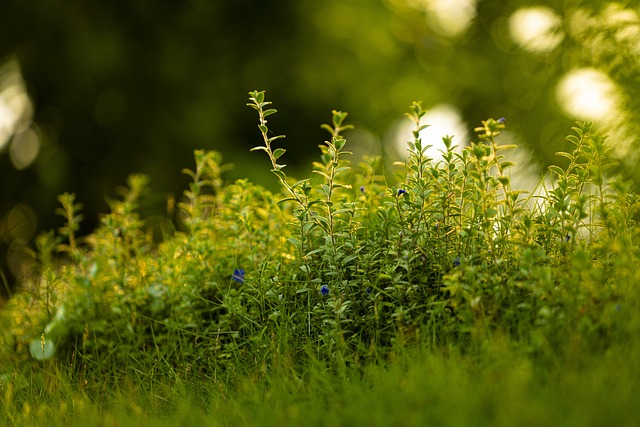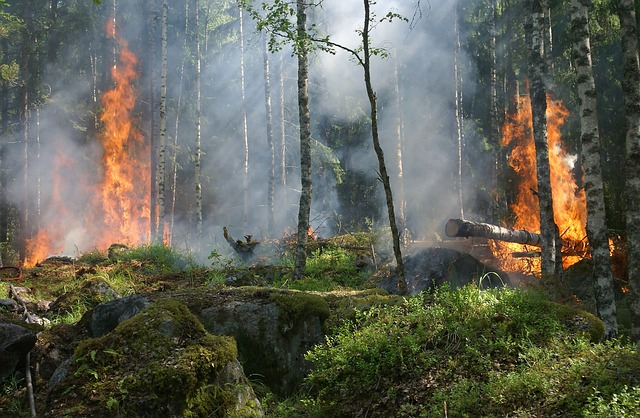A growing number of homeowners are wondering what they can do to safeguard their properties and the surrounding area as wildfires pose a danger to the nation. The wildland-urban interface (WUI), the fastest-growing housing sector in the nation and the most fire-prone, is home to one-third of all Western U.S. inhabitants, according to Adrienne Edwards and Rachel Schleiger, authors of Fireescaping Your Home: A Manual for Readiness in Wildfire Country.

According to the authors, you can make your landscape more fire-smart wherever you reside by putting these easy but effective recommendations into practice. The ultimate message is that there’s no assurance your house won’t burn down, but you can design a habitat to make it as safe and attractive as you can. “[Fire] can happen anywhere,” adds Edwards.
How Does Fir Escape?
“The practice of creating fire-resilient landscapes by reducing fire hazards and supporting wild ecosystems” is how Edwards describes firescaping. Defensible area must be established while promoting a healthy environment that supports animals and people via the soil, water, and air.
The distinction is significant because, according to Edwards and Schleiger, plants and organic mulch, when planted and maintained appropriately, can slow down fire. In contrast, many homeowners (and some insurance companies) think that eliminating the majority of organic matter from the landscape, from trees to mulches, is the first step toward becoming fire-resilient.
According to Edwards, “insurance inspectors don’t always understand the terrain and how wildfires work.” Sometimes, their practices, which include clearing all the vegetation, might increase the risk of a home fire. The most common cause of structural ignition is flying embers. If you remove all the vegetation during a wildfire, the embers will strike your home.
Firstly, your family, then your house
Before doing anything else, Edwards and Schleiger emphasize creating an escape plan to protect your loved ones in the case of a fire. As part of your wildfire action plan, you should prepare an evacuation plan, contact information, a “go bag,” and packing lists of essentials.
Edwards states, “One of the strongest recommendations is to get involved with your local Fire Safe Council to learn about local emergency strategies.” Create one if there isn’t already one.
The writers of the book suggest consulting a fire specialist or specialized contractor to evaluate your home’s safety, even though it provides advice on safeguarding your home’s construction.
Creating a Landscape That Is Fire-Smart
Consider the areas of defense that surround your house as part of your landscaping design. According to research, the first two zones significantly affect fire safety1.
Zone Noncombustible (NZ)
The “Noncombustible Zone” is the first five feet from the walls of your home. This area shouldn’t include any flammable items throughout the fire season. This 15-foot zone should not include wood fences, railings, arbors, mulch, or woody plant material in high-risk locations for wildfires.
With this method, you have to give up on the typical foundation plants, but you may still have seasonal color outside of the fire season by using bulbs, ephemerals, or wildflowers that bloom in the spring. Edwards says to just make sure you brush away any leftover biomass before fire season.
Zone of Lean, Clean, and Green (LCG)
Lean, Clean, and Green is the second zone, which is 5 to 30 feet (more if it’s slope-facing). In a high-risk location for fires, this area may span up to ninety feet.
Here’s where you start planting. Lean plants should be maintained apart, with plenty of airflow and fire breaks. Maintain a debris-free space and well-pruned plants. To keep the plants happy and healthy, give them water.

Edwards suggests layered but discontinuous plants in islands divided by noncombustible hardscapes like bare ground, pavers, or gravel, as an alternative to foundation-style solid rows of shrubs. These pathways, which should be four feet wide, improve wind circulation and serve as fire breaks by limiting the accumulation of plant materials and wind-blown leaves in eddies that may ignite a fire. See where leaves gather in the autumn to locate eddies, and make sure such areas are removed. Fences are a major fire route; keep them free of spider webs and debris. Trees should not be taller than fifteen feet and should be placed such they fall outside of the noncombustible zone.
According to Edwards, “you are reducing wind speed and wind turbulence, which can reduce the circulation of embers around your home by having plants around your home that are strategically planted and maintained in an LCG fashion.” Also, the visual richness of your environment increases significantly.
Mulch
A key tactic for conserving water and regulating soil temperature is covering the ground with mulch or groundcover plants. Composted wood chips, according to Edwards, have been shown to be the least flammable organic mulch, holding water, nourishing the soil ecology, and sustaining plants—a feature that some insurance companies and municipalities restrict the use of wood mulch for. (The worst bark was rubberized bark; it burned quickly and intensely.) In the LCG zone, she advises spreading wood mulch sparingly, spaced out by noncombustible areas.
Plant Selections
Although a lot of attention is focused on the most flammable species, plant management and placement are just as crucial as the plants you choose. Succulents may become dangerous when they gather dead leaves that turn into fuel. Succulents are often assumed to be more fire-smart since their leaves are packed with water.
The native plants in your region should be your first choice since they are naturally adapted to the soil and climate of the area, according to Edwards and Schleiger. They not only benefit the local animals but also save time and money since, once established, they usually need less extra watering and upkeep than non-natives. Furthermore, a lot of non-natives have spread like invasives, eliminating vital habitat. The majority of the grasses that have caused an upsurge in wildfires in the West are non-native.
Low-growing plants with thick leaves, strong bark, or deep roots are less flammable than tall, fluffy plants with shallow root systems, like as grasses. Treat combustible plants carefully and keep them far from other fuels.
Herbaceous forbs, or flowering plants other than grasses, were the least combustible type of plants, according to a research conducted in New Zealand; grasses, trees, and shrubs were on par.
Upkeep
Proper watering encourages robust, stronger plants. Edwards suggests modifying watering according to the weather. For this, smart timers may be useful. Weak foliage growth that dries up fast in the heat might be encouraged by overwatering. (Plants under stress from drought dry up and produce more fuel.) Watering deeply and sparingly promotes deep roots, which is more drought-tolerant.
In order to increase air circulation and block possible fire routes, pruning is essential. To highlight the beauty of trees and shrubs, embrace negative space in your design, thin out woody plants to make them more open, and limb up trees six feet to prevent branches from touching the ground.
According to Edwards, “you want to figure out how to disconnect the fuels both vertically and horizontally.”
The authors advise keeping seedheads and stalks in situ for animal habitat during chilly, rainy seasons. During arid periods, routinely remove any dead plants. To help local wildlife, Edwards keeps a leaf swale apart from plants; she claims that it normally decomposes in a few months.
These are just some of the most important things you can do to make your house and garden more fire-safe.
